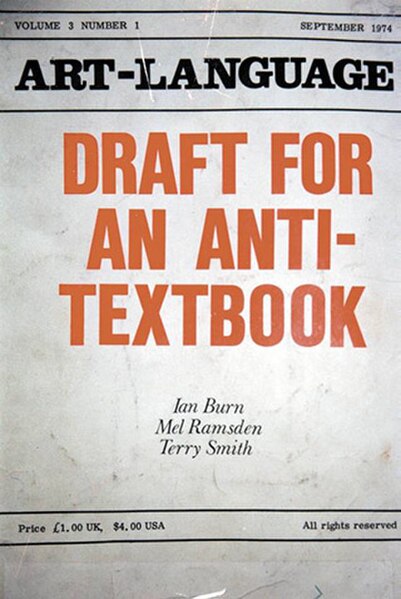Victor Burgin is a British artist and writer. Burgin first came to attention as a conceptual artist in the late 1960s and at that time was most noted for being a political photographer of the left, who would fuse photographs and words in the same picture. He has worked with photography and film, calling painting "the anachronistic daubing of woven fabrics with coloured mud". His work is influenced by a variety of theorists and philosophers, most especially thinkers such as Sigmund Freud, Henri Lefebvre, André Breton, Maurice Merleau-Ponty, Michel Foucault and Roland Barthes.
Victor Burgin, London 2019. Photograph by Julian Burgin
Conceptual art, also referred to as conceptualism, is art in which the concept(s) or idea(s) involved in the work are prioritized equally to or more than traditional aesthetic, technical, and material concerns. Some works of conceptual art may be constructed by anyone simply by following a set of written instructions. This method was fundamental to American artist Sol LeWitt's definition of conceptual art, one of the first to appear in print:In conceptual art the idea or concept is the most important aspect of the work. When an artist uses a conceptual form of art, it means that all of the planning and decisions are made beforehand and the execution is a perfunctory affair. The idea becomes a machine that makes the art.
Detail, Memorial for the Victims of Nazi Military Justice by monumental sculptor Olaf Nicolai, Ballhausplatz, Vienna
Marcel Duchamp, Fountain, 1917. Photograph by Alfred Stieglitz
Art & Language, Art-Language Vol. 3 Nr. 1, 1974
Lawrence Weiner. Bits & Pieces Put Together to Present a Semblance of a Whole, The Walker Art Center, Minneapolis, 2005.





